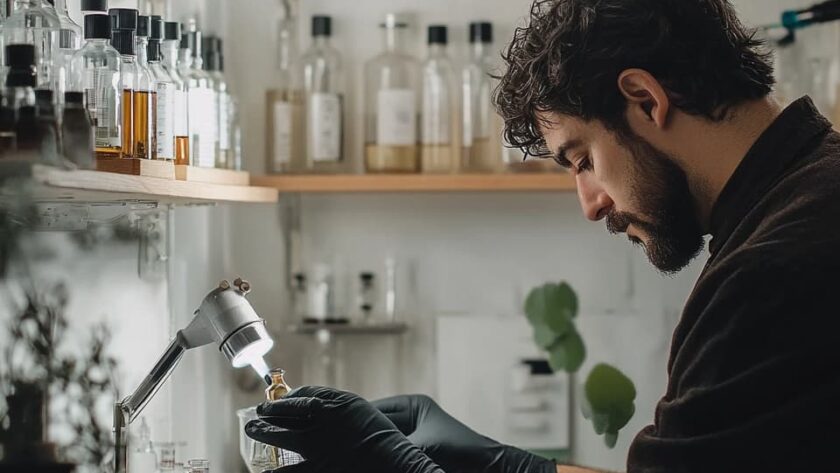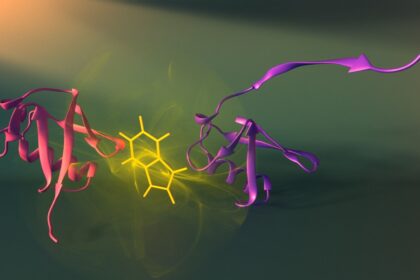Scents are everywhere. From the comforting aroma of freshly baked bread to the sharp sting of ammonia, our sense of smell is constantly at work—even when we don’t notice it. But have you ever wondered how we actually detect these scents? Or why the same fragrance can delight one person while making another cringe?
Welcome to the fascinating world of olfactory chemistry, where molecules meet memory, and biology blends with emotion. In this article, we’ll explore how our sense of smell works on a chemical level, and why humans perceive scents so differently from one another.
The Science Behind Smell: A Molecular Introduction
At its core, the sense of smell (also known as olfaction) is a chemical process. It begins when volatile molecules—tiny airborne compounds—enter your nose as you breathe. These molecules are often released from substances like food, flowers, perfumes, or even people.
Inside your nose, specifically within the olfactory epithelium, is a patch of specialized sensory cells called olfactory receptor neurons. Each of these neurons has olfactory receptors—proteins that are shaped to bind with certain odor molecules, much like a lock and key.
When an odorant molecule fits into a receptor, it triggers an electrical signal that travels to the olfactory bulb, a structure at the front of the brain. From there, the signal continues to other brain areas involved in perception, memory, and emotion, including the amygdala and hippocampus.
Incredibly, humans have around 400 types of olfactory receptors, but we can detect over 1 trillion different smells. This is possible because each scent is made of a complex mixture of molecules, and our brains can interpret the combination of signals to recognize specific odors.
Why Do Scents Smell Different to Everyone?
Have you ever noticed that a perfume your friend loves smells terrible to you? Or that some people can’t stand the scent of cilantro, while others find it refreshing?
Here’s why we smell things differently:
1. Genetics
The most significant factor is genetic variation in olfactory receptors. Everyone inherits a unique set of genes that code for slightly different receptor proteins. That means a scent molecule may bind strongly to a receptor in your nose, but weakly—or not at all—in someone else’s.
A famous example is androstenone, a molecule found in sweat. Some people perceive it as pleasant (musky or sweet), others as unpleasant (like urine or body odor), and some can’t smell it at all.
2. Cultural and Environmental Factors
Our experiences shape how we interpret smells. People raised in different cultures often have different scent associations. For example, the smell of fermented fish sauce might seem off-putting to someone unfamiliar with Southeast Asian cuisine but delicious to someone who grew up with it.
Exposure also matters: if you frequently encounter a smell in a positive context, your brain may associate it with good memories.
3. Age and Health
As we age, our sense of smell can weaken. Certain health conditions—like sinus infections, neurological disorders (e.g., Parkinson’s, Alzheimer’s), or COVID-19—can also impair or change olfactory perception.
Interestingly, pregnant women often report heightened sensitivity to smell, which researchers believe may help protect them from harmful substances during early development.
4. Emotions and Memory
Smell is the only sense directly connected to the brain’s limbic system, where emotions and memories are processed. That’s why a particular scent—like the smell of sunscreen or cinnamon—can instantly transport you to a childhood vacation or a family holiday.
Because emotional associations differ between people, two individuals might respond to the same scent in completely different ways.
The Role of Chemistry in Fragrance Design
Fragrance designers, or perfumers, rely heavily on chemistry to craft appealing scents. They blend molecules with different volatility, solubility, and molecular weight to control how a scent unfolds over time:
- Top notes: The first scents you detect—usually light and citrusy—evaporate quickly.
- Heart (middle) notes: These are the body of the fragrance, often floral or spicy.
- Base notes: These molecules linger the longest and provide depth, like vanilla or musk.
Synthetic chemistry has also allowed perfumers to recreate rare or endangered scents (like ambergris or sandalwood) without harming animals or ecosystems.
Smell and Taste: An Inseparable Duo
Smell doesn’t work in isolation—it’s a crucial component of flavor. When you eat, volatile compounds travel from the back of your throat to your nasal cavity, triggering your olfactory receptors. That’s why food tastes bland when you have a stuffy nose.
Chemistry plays a key role here too. For example:
- Esters create fruity aromas like banana or pear.
- Pyrazines add roasted or nutty notes.
- Thiols contribute to the smell of garlic or onions—and can be polarizing in wine.
Understanding the chemistry of smell can even improve how we experience food, wine, and beverages.
Practical Applications of Olfactory Science
Olfactory chemistry isn’t just about perfume or flavor—it has important applications across many fields:
- Medical diagnostics: Dogs (and even electronic noses) can be trained to detect cancer, diabetes, and infections by smell.
- Environmental safety: Gas leaks are made detectable by adding odorants like mercaptan.
- Neuroscience research: Studying smell disorders helps us understand brain diseases.
- Marketing and retail: “Scent branding” uses fragrances to influence consumer behavior.
Final Thoughts
Smell is a deeply personal, powerful sense that’s shaped by chemistry, biology, and experience. The molecules in the air may be invisible, but their impact on memory, emotion, and behavior is undeniable.
As scientists continue to decode the complex language of scent, we’re gaining new insights into human perception—and learning to appreciate just how remarkable our noses really are.
So the next time you inhale the aroma of coffee, pine trees, or a loved one’s perfume, remember: you’re experiencing a symphony of molecules, orchestrated by the chemistry of smell.





